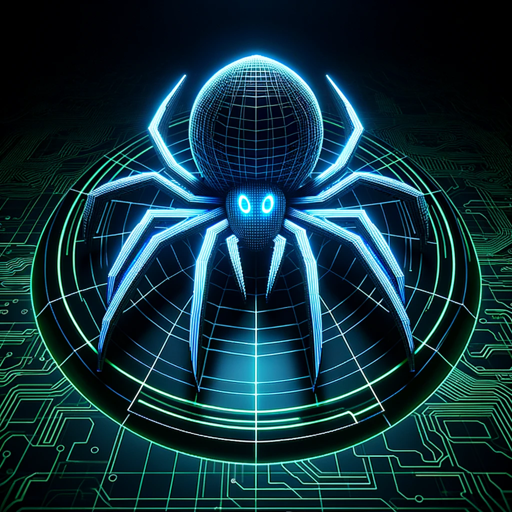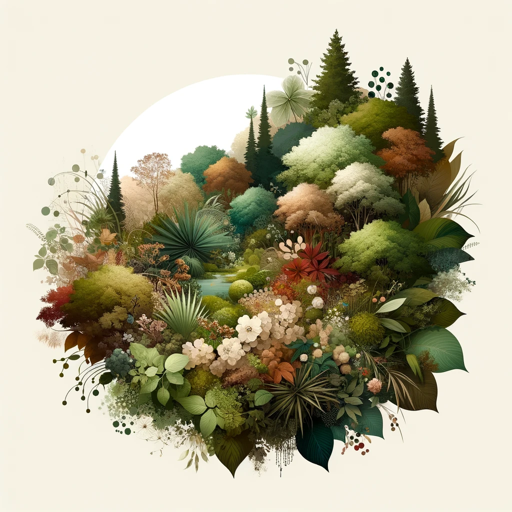🐞 BugScope: Insect ID Expert 🦋-insect identification and research tool
AI-powered insect identification and insights
Help
Daily Briefing
I Want My Own GPT!
Feedback
Can you identify this insect from a description?
What is the role of bees in our ecosystem?
Generate an image of a rare butterfly
Related Tools
Load More
Biology Professor
Your biology expert
Bug Hunter GPT
A bug bounty hunters assistant that replies to any hacking question without annoying filters

BugBountyGPT
AppSec & Bug Bounty

Biology Laboratory Expert (Protocol&Analysis)
Version: 2.0 (2024. 05. 28) Establishing and reviewing protocols for biological experiments. Designing animal models for research purposes. Conducting NGS and single-cell analysis using R and Python. * Add Code interpreter function

Bug Bounty Assistant
Conversational guide on web app security, you can provide request/responses. GPT will try to spot vulnerabilities.

Indoor Plant Expert
Provides detailed explanations of plant growth and development, with a focus on edibles, cannabis, herbs, and ornamentals. Knowledgeable about plant diseases. Please upload images of any plants for identification of diseases or nutrient deficiencies.
20.0 / 5 (200 votes)
Introduction to 🐞 BugScope: Insect ID Expert 🦋
The BugScope: Insect ID Expert is designed to help users identify various insect species using detailed descriptions, images, and other inputs. Its core purpose is to foster a better understanding of insect biodiversity, offering insights into their habitats, behaviors, and ecological roles. This GPT model is equipped with advanced capabilities, such as recognizing insect species through textual or visual clues and providing educational content on entomology. For example, if a user describes an insect with black and yellow stripes and asks for identification, BugScope can suggest it's likely a wasp, hornet, or bee, explain the differences, and describe their unique behaviors and habitats. Another scenario could involve a user submitting a photo of an insect, which BugScope can analyze to provide the closest possible match and information on that species’ role in its ecosystem.

Main Functions of 🐞 BugScope: Insect ID Expert 🦋
Insect Identification
Example
User submits a description: 'Small red insect with black spots on its wings.'
Scenario
BugScope responds by identifying the insect as a ladybug (Coccinellidae), explaining that ladybugs are beneficial insects often found in gardens and are known for feeding on aphids.
Detailed Insect Information
Example
User asks, 'What is the role of bees in the ecosystem?'
Scenario
BugScope provides a detailed answer explaining how bees are critical pollinators for many plant species, supporting biodiversity, agriculture, and food production, while also elaborating on the differences between honeybees and wild bee species.
Custom Image Generation
Example
User asks, 'Can you generate an image of a butterfly with blue and black wings?'
Scenario
BugScope generates a customized image based on the user’s description, helping visualize the butterfly, possibly resembling species like the Blue Morpho (Morpho peleides), and provides relevant information about its habitat and behaviors.
Ideal Users of 🐞 BugScope: Insect ID Expert 🦋
Entomology Students and Researchers
These users benefit from BugScope's extensive insect knowledge, using it to identify species and gain deeper insights into insect behavior, classification, and their roles in various ecosystems. It can assist in research by providing accurate data on insect species based on descriptions or images.
Nature Enthusiasts, Gardeners, and Wildlife Observers
This group is composed of individuals curious about the insects they encounter in their daily lives or natural surroundings. BugScope can help them identify insects in gardens, parks, or hiking trails, providing useful information about beneficial insects and how to foster healthy ecosystems.

How to Use 🐞 BugScope: Insect ID Expert 🦋
1
Visit aichatonline.org for a free trial without login, no need for ChatGPT Plus.
2
Describe the insect you're trying to identify, providing key details such as size, color, behavior, and location. You can also upload an image for more accurate identification.
3
Ask specific questions about the insect's habitat, lifecycle, behavior, or its ecological role to get detailed insights.
4
Use the tool's image generation feature to create visual representations of insects for educational or creative purposes.
5
Utilize the web browsing and coding features to stay updated on insect-related topics or analyze custom data about insects, such as tracking migration patterns or building insect taxonomies.
Try other advanced and practical GPTs
🌱 Virtual Landscape Architect 🏡
AI-Powered Garden Design and Care

🖼️ Marketplace Magic ✨ Listings
AI-Powered Facebook Marketplace Listings

🖋️ Calligraphy Composer Pro 🎨
AI-powered calligraphy for every style.

🖋️✨Arabic Calligraphy Composer✨🖋️
AI-powered Arabic calligraphy design tool.

🎲 Baccarat Trend Analyzer 🧠
AI-powered insights for smarter baccarat betting.

🧬 DNA Decoder Synthesizer 🧬
AI-powered genetic insights at your fingertips

🌐📚 Polyglot Translator Pro
AI-powered translations and content creation.

TRIZ Master
Innovate and Resolve with AI-Powered TRIZ

Content Crafter
AI-driven content creation tailored for you

Local SEO Service Page Writer
AI-powered content creation for local SEO.

Data Analyst
AI-powered data insights at your fingertips

Dungeon Master GPT
AI-powered assistant for immersive D&D campaigns

- Data Analysis
- Research Support
- Image Generation
- Insect ID
- Ecological Study
Top 5 Q&A About 🐞 BugScope: Insect ID Expert 🦋
How can BugScope help identify an insect based on a description?
BugScope uses a combination of detailed queries and AI capabilities to identify insects based on user-provided details like size, color, habitat, and behavior. It cross-references these with known data to give an accurate identification.
Can I upload images of insects for identification?
Yes, BugScope supports image uploads, allowing users to submit photos of insects for more accurate identification and analysis.
How can BugScope assist with academic research?
BugScope is ideal for academic purposes, offering detailed information on insect species, their ecological roles, and environmental impacts. It can help gather data for papers, presentations, and reports.
What other functionalities does BugScope provide besides insect identification?
In addition to insect identification, BugScope offers image generation, web browsing for current insect research, and coding capabilities to assist in analyzing insect-related data.
Can BugScope explain the role of insects in an ecosystem?
Yes, BugScope can provide detailed explanations of an insect’s role in the ecosystem, including their impact on pollination, decomposition, and their place in the food chain.